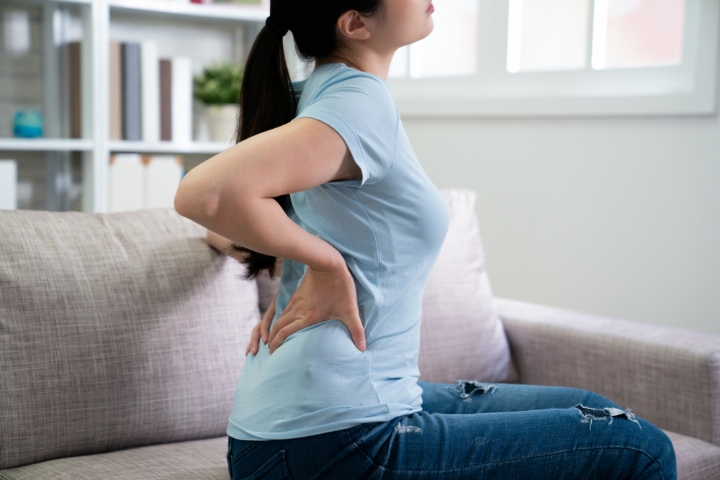
Image: shutterstock
Everyone can guess how arduous being pregnant for 9 months and then delivering a baby can be, but only women know the nitty gritty details that tax them on a daily basis. Giving birth to your little bundle of joy can be the most surreal and satisfactory experience, but it is also exhausting, and hard on the mother’s body. Not just physically but mentally as well. Irrespective of if you have a vaginal birth or a cesarean, or if you opt for an epidural or go au natural, giving birth is traumatic for your body, which is why it is so important to rest up and give yourself a chance to heal. Although you may want to go back to your usual routine a couple of days after coming home, you need to resist this temptation because the recovery process takes a lot longer than you would expect. So, if you want to know why, this is the article for you. Here’s why it takes women time to recover after childbirth.
1. The Belly
Image: Shutterstock
The postpartum condition of a woman’s abdomen is largely influenced by the amount of weight she gained during pregnancy. This is because the subcutaneous fat in the abdominal area, which serves to protect the developing baby, increases substantially during pregnancy due to hormonal changes and increased nutritional requirements. This increase in subcutaneous fat is essential for the safety of the fetus. After a vaginal birth, a woman’s abdominal muscles typically begin to gradually return to their pre-pregnancy state within 6 to 8 weeks following delivery.
However, it takes much longer for women who have undergone a cesarean to restore their abdominal muscles. If you don’t face any issues with abdominal separation or diastasis recti, then you can start to exercise around 1.5 or 2 months after the delivery. Make sure to do exercises that don’t exert your body, like going for a short walk or doing some stretches. This way you will be able to fully heal and restore your abdominal muscles in a year or two.
2. The Breasts
Image: Shutterstock
Breast milk is the main source of nutrition for babies for the better part of the first year, and this can be very hard on a mother’s breasts. The mother’s breasts will swell up during lactation due to the enlargement of segments that are stretched by the milk it holds. So, the weight of the breasts as well as the size increases by 2 to 3 times during the postpartum period, making it impossible for muscles and ligaments to support the breast tissues the way they did before the pregnancy. This can cause the breasts to sag.
In addition, the nipples and areolas become enlarged and darker. The skin can become transparent and thinner, exposing the blue blood vessels. The more milk the mother has, the bigger and heavier her breasts will be, which means she needs proper support to care for them. Although younger mothers have more elasticity in their tissues, what really matters is how trained your breast muscles were before pregnancy. This will dictate how much time it will take to restore your breasts after the lactation period. So, start exercising these muscles before and while you’re pregnant in order to minimize breast sagging.
3. Musculoskeletal system
Image: Shutterstock
During the pregnancy, a woman’s musculoskeletal system experiences an increased load because of the weight of carrying the baby. But the body produces a hormone called relaxin in order to enhance the elasticity of the vertebral ligaments and the muscles. This can also lead to changes in the spine, joints, lower limbs, the pelvic bones and the back muscles. Carrying such a heavy load in one’s body can change the center of gravity in a woman’s body by causing the spine to shift, which in turn can be painful and cause discomfort. After the delivery however, a drastic decrease in progesterone and estrogen levels takes place. And this slows down the body’s metabolism, leading to the increase of fatty tissue.
It’s important to note that the recovery of the musculoskeletal system happens gradually over time. And it can take anywhere between 3 to 4 months to get over the joint pain and muscle cramps that you might experience after childbirth. Doing special exercises and wearing an after delivery support bandage can help in your recovery. Slowly start to strengthen your back muscles over time in order to deal with the pain in your lumbar area.
The most important thing to keep in mind is that all bodies are different. Give yourself time to rest, heal and recover. Try to exercise and eat nutritious foods without taxing yourself. Eventually, your body will recover and you will start feeling like yourself again.
Sources
- Altered musculoskeletal mechanics as risk factors for postpartum pelvic girdle pain: a literature review, NCBI
- Physiology, Postpartum Changes, NCBI
- Anatomy and Physiology of the Breast during Pregnancy and Lactation, NCBI
- Maternal Visceral Adiposity by Consistency of Lactation, NCBI
- Management of diastasis of the rectus abdominis muscles: recommendations for swedish national guidelines, NCBI















